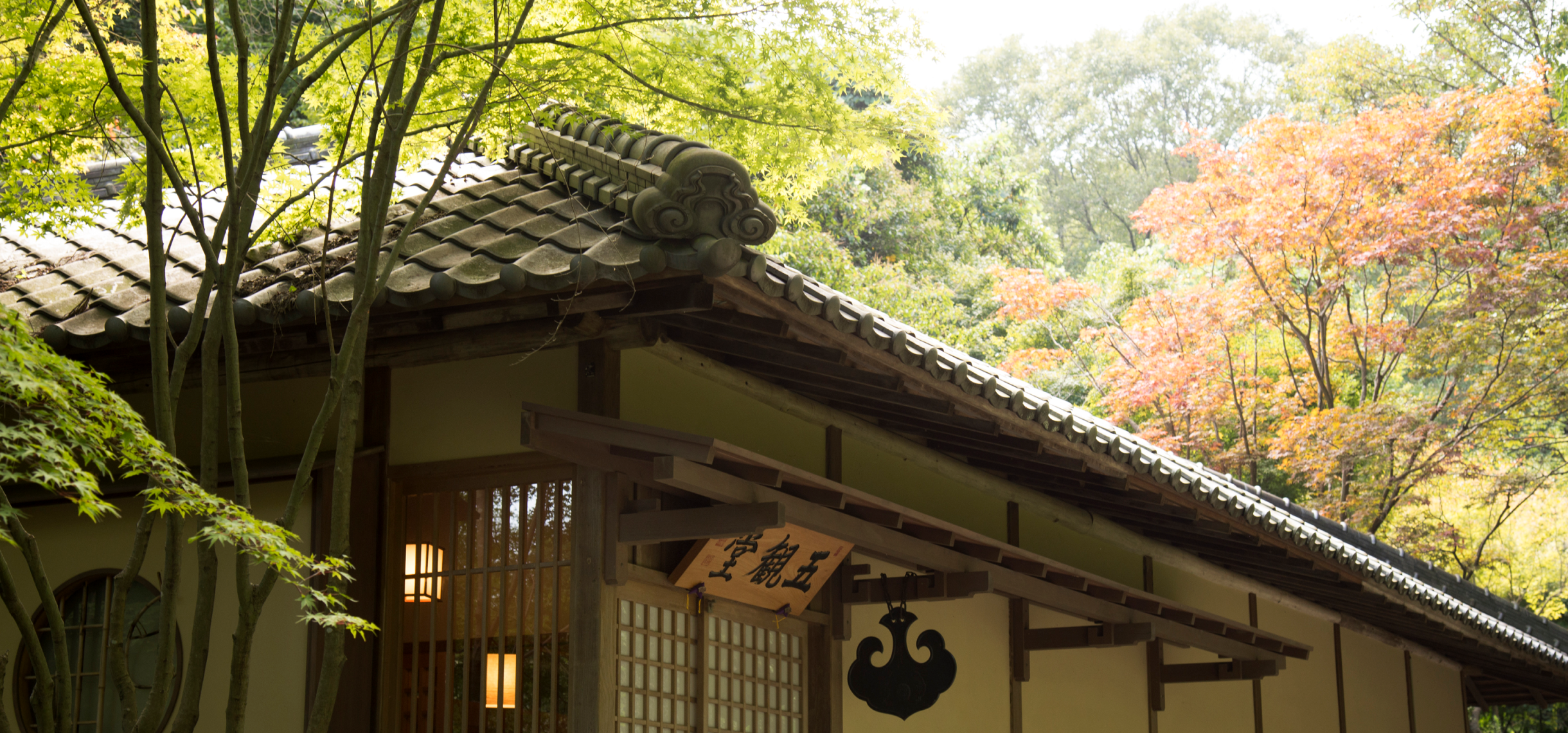
EXPLORE
ZEN EXPERIENCE
Gokando
Treat all daily-life activities such as having meals and cleaning as training and practice of Buddism.
In Gokando, you will experience the way of Zen sect life, by enjoying Yudame Udon with Jihatsu, a set of five bowls, and thick and long unsui chopsticks, which is the same style as the Rinzai sect's Zen monastery.
Shinshoji udon
In the morning of every day that ends with 4 and 9 (shikunichi), Unsui, training monks clean the temple extra thoroughly, and are allowed to shave their heads and take a bath. Any sounds, besides the voices reading sutras, the bells and clappers, are strictly prohibited during the meals at monastery, but the udon is required to be eaten very noisily and they can eat as much udon as they like on that days. For unsui, the best treat is udon, and they hold dear and cannot forget the udon of monastery.
The Origins of the Shikunichi meals
The origins of eating udon on shikunichi is not entirely clear. However, one of the reasons that the Rinzai sect is inseparably connected to udon might be that Enni Bennen (National Teacher Shoichi, 1202-1280), the founder of the Kyoto Rinzai sect headquarters Tofukuji, brought flour milling techniques back from China in 1241.

Shinshoji udon noodles (1,200 yen) / open:11:00 - 15:00 (LO14:30)
Jihatsu and Unsui chopsticks
In the monks' monastery, meals are taken three times a day using a five-layer set of dishes called jihatsu (literally, "held alms bowls"). When eating udon with them, they are lined up in order of size (largest to smallest) from left to right.
They are filled in this way:
First Dish: Udon broth (normally used for rice porridge or cooked rice and barley)
Second Dish: Side dish (normally used for miso soup)
Third dish: Takuan pickles (normally side dish and takuan)
The chopsticks called "unsui chopsticks", are very long and thick. In the Rinzai sect, sutras are always read before meals, during which wooden clappers are used. These chopsticks serve as a replacement if there are no clappers.
The sutras read before meals is the "Five Meal Contemplations" verse, and therefore this place is called Gokando (Five Contemplations Hall).
One: Considering the amount of effort that brought us this food, I reflect on its origins.
Two: I reflect on whether my virtue and practice is adequate to receive this food.
Three: It is of the utmost importance to guard my mind and leave behind errors such as greed.
Four: Taking this good medicine is for healing my withered body.
Five: I receive this food in order to reach Buddhahood.
If you're able to appreciate your meal by using jihatsu, your way of thinking about food might change.

